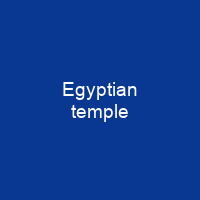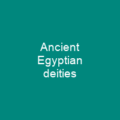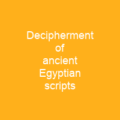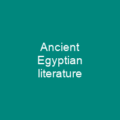Discovering the Mysteries of Ancient Egyptian Temples
Imagine stepping back into time to explore the grandeur and mystique of ancient Egypt’s temples. These monumental structures were not just places of worship but also centers of economic activity, political power, and cultural significance. They served as eternal homes for gods, where rituals maintained divine order (maat) through offerings, festivals, and warding off chaos.
The Pharaoh’s Role in Temple Maintenance
While the pharaoh delegated his authority to high-ranking priests, he still had a crucial role. The performance of temple rituals was an official duty, restricted to these select individuals. Despite this, the existence of temples across Egypt made it impossible for him to participate in all ceremonies personally. Most duties were delegated to priests, but the pharaoh remained obligated to maintain and expand them throughout his realm.
Deities and Their Temples
Each temple had a principal deity, with many dedicated to other gods as well. Not all deities had temples; some were involved primarily in magical or private practice. Many gods were venerated mainly in certain areas of Egypt, though some spanned the country. Pharaohs built mortuary temples for their own spirits, often linked to their tombs. These were regarded differently from divine temples but recent research suggests there’s no clear division.
Economic Powerhouses
Temples were key centers of economic activity, employing tens of thousands of people and wielding significant influence. Their workings were analogous to those of a large Egyptian household, with servants serving the temple god as they might serve an estate master. This similarity is reflected in the term for temple lands and their administration, pr, meaning ‘house’ or ‘estate.’
Revenue Streams
The king’s donations often came from military campaigns or tribute given by client states during the New Kingdom. Other revenue came from private individuals who offered land, slaves, or goods to temples in exchange for offerings and priestly services. Much of a temple’s economic support came from its own resources, including large tracts of farmland producing grain, fruit, or wine, supporting herds of livestock, and launching expeditions into the desert to collect resources.
Trade and Resources
The temple estate often represented a significant portion of Egypt itself. As direct overseers of their own economic sphere, large temple administrations wielded considerable influence. However, it is unclear how independent they were from royal control. Once Egypt became a Roman province, temples faced reforms on land possession and taxation.
Evolution of Egyptian Temple Design
The earliest known shrines appeared in prehistoric Egypt around the late fourth millennium BC, made of perishable materials such as wood and mudbrick. Early Dynastic Period pharaohs built funerary complexes with rectangular mudbrick enclosures, while royal funerary monuments expanded during the Old Kingdom. The Pyramid of Djoser marked a significant development, and Sneferu’s successors followed a similar pattern.
Development Through Time
During the Middle Kingdom, pyramid complexes continued to evolve, with temples becoming more symmetrical and using stone. In the New Kingdom, Egypt devoted more resources to its temples, which grew larger and more elaborate, with higher-ranking priestly roles controlling a large portion of Egypt’s wealth. Many temples were built entirely of stone, with a fixed general plan that became standard.
Unique Designs
New Kingdom pharaohs stopped building pyramids for tombs and instead built mortuary temples near their main temples. Pharaoh Akhenaten promoted Aten over other gods and built new Aten temples with unique designs, but this was reversed after his death. Subsequent pharaohs rebuilt traditional temples, and the power of the priesthood increased.
Foreign Influence
As Egypt fell to outside powers, foreign rulers funded and expanded temples to strengthen their claim to the throne. Egyptian temple style evolved, incorporating more female and child deities, and new architectural forms developed. After Rome conquered Egypt, many temples continued to be built in Egyptian style, while others were built in a Roman style.
Temple Design and Symbolism
Like all ancient Egyptian architecture, temple designs emphasized order, symmetry, and monumentality. Elements of temple design also alluded to the form of the earliest Egyptian buildings. Cavetto cornices at the tops of walls were made to imitate rows of palm fronds placed atop archaic walls, while the torus molding along the edges of walls may have been based on wooden posts used in such buildings.
Temple Layout
The temple pattern could vary considerably. Many temples, known as hypogea, were cut entirely into living rock, as at Abu Simbel, or had rock-cut inner chambers with masonry courtyards and pylons, as at Wadi es-Sebua. The traditional design was a highly symbolic variety of sacred architecture, reflecting its role as the god’s home and representing a piece of the divine realm on earth.
Symbolic Elements
The elevated, enclosed sanctuary was equated with the sacred hill where the world was created in Egyptian myth and with the burial chamber of a tomb. The processional way could stand for the path of the sun traveling across the sky, and the sanctuary for the Duat where it was believed to set and be reborn at night.
Temple Decoration and Rituals
The temple’s inner chambers centered on the sanctuary of the temple’s primary god. The focus of most temples was on the cult image: a statue of the temple god, which its ba (spirit) was believed to inhabit. Subsidiary chapels lay to the sides of the main one, dedicated to gods associated with kingship or specific deities.
Daily Rituals
The daily rituals in most temples included two sequences of offering rites: one to clean and dress the god for the day, and one to present it with a meal. At sunrise, the officiating priest entered the sanctuary, carrying a candle to light the room. He opened the doors of the shrine and prostrated himself before the god’s image, reciting hymns in its praise.
Festivals
Festivals replaced daily rituals, often tied to specific religious significance and taking place at a single temple or region. They involved reenactments of mythological events, performances of symbolic acts, and processions outside the temple. Sacred animals were kept in temples, worshipped for a certain length of time, and replaced with new animals according to specific markings or divine oracle.
Modern Insights
The decoration on temple walls provided valuable information on festivals, myths, rituals, and pharaohs’ activities. Large sculptures included obelisks, colossal statues of kings, and figures of gods. Votive figures were donated to gain divine favor, while cult images were made of precious materials like gold and lapis lazuli.
People’s Interaction with Temples
People sought oracles during festivals, which provided answers to questions through priests’ gestures. Laymen interacted with gods in various ways: household shrines, community chapels, public prayer spaces, royal colossi, and private niches for devotion.
Modern Efforts
Today, many temple sites remain with substantial remains, although most major temples in Lower or Middle Egypt are well-preserved only at a few sites like Karnak, Luxor, and Abu Simbel. The Egyptian government is working to balance tourism with protecting ancient monuments from negative impacts. Archaeological work continues as new temples are discovered and studied, with damaged structures being reconstructed.

As we continue to explore and preserve these ancient temples, we uncover not just the grandeur of a bygone era but also the intricate social, economic, and religious structures that shaped ancient Egypt. These temples stand as testaments to human ingenuity and devotion, offering us a window into one of history’s most fascinating civilizations.
You want to know more about Egyptian temple?
This page is based on the article Egyptian temple published in Wikipedia (retrieved on November 28, 2024) and was automatically summarized using artificial intelligence.







